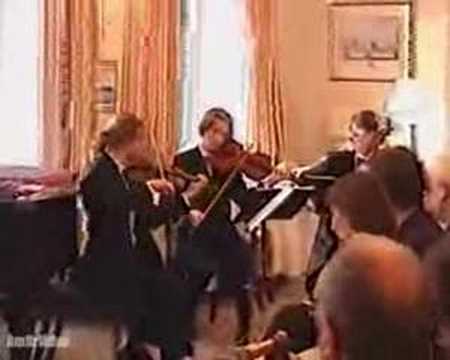Alte und neue Tempête (Old and New Tempête), op. 10
In the years after the Congress of Vienna of 1814-15 dance fashions in Vienna changed, to be sure only gradually, but conclusively. In balls of the biedermeier period fashions changed from German dances and minuets to waltzes, from écossaises, as may be found in the list of Schubert’s works, to galops. The favourite in the eighteenth century, the Langaus, sung, for example, in Wenzel Müller’s Waltz Aria, disappeared. It was felt to be too wild.
Johann Strauss’s composition with a group of old dances, presented for the first time at his benefit performance on 26th November 1827 at the Catherine Ball at the Weisser Schwan in Rossau, was in the manner of a farewell to a vanishing period. The work, which consists of six dances, appeared on 1st February 1828 from Tobias Haslinger, but remained without a successor.
The structure offers a colourful series of dances. No.1, Alte Tempête (four eight-bar sections, marked Presto) is followed by the rather slower Neue Tempête (four four-bar sections, marked Allegro). No.3 consists of two eight-bar sections with reprise, Allegro non troppo, with the addition ‘by Johann Strauss’, and No.4 is a quieter Altdeutscher Polstertanz, marked Allegro non troppo and an eight-bar waltz section in conclusion. The fourth part provides an energetic contrast with the Altvater Galoppade (twice four bars, Presto), which is to be repeated ‘as often as necessary’. The 3/8 Altvater Marsch is calm again (Andante), but with a final eight-bar Presto in 2/4. A wild Sauvage provides a conclusion (Allegro, four bars and eight bars in 4/4, alla breve), which ‘should be continued until it is clapped’. This is in the piano version.
The Neue Tempête was contributed by Johann Strauss himself, with the other dances taken from his predecessors, among others Michael Pamer. The melodies come at least in part from the eighteenth century. The Polstertanz (also Pölsterl-Tanz) came to the suburbs of Vienna from the country districts of Austria and from South Germany. It was originally a round dance with an established ritual. The girls threw little cushions at the feet of the men, but quickly lifted them up again. If a man managed to kneel down and hold onto it, the girl had to pay the forfeit of a kiss to have it back. In other districts a boy in the dance threw a cushion at the feet of the girl he had chosen and knelt down. If she picked it up, she accepted his courtship. Whether these customs were still current in Vienna in 1827 is not recorded. In private circles it is conceivable, but rather improbable in ballrooms. Be that as it may, there were no more old German Cushion Dances written. Johann Strauss’s Opus 10 was, after all a farewell.
Text by Prof. Franz Mailer
English version by Keith Anderson
















